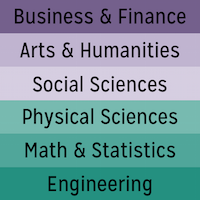It’s Not About the Money: Optimizing Academic-Industrial Partnerships
Today, more than ever, industry leaders are looking to partner with academic computer science programs. With available computer science expertise at a premium, they’re looking for ideas, for new hires, and for help on crucial projects. Universities are the mother lode for the personnel and expertise they crave. On July 18, I presented at the CRA Conference at Snowbird session titled “Local Corporate Labs, Centers and Development Offices: Optimizing Department/Industry,” which explored the growth of corporate lab culture, and I’d like to share some of insights from that talk.
These partnerships are just as enticing from the university side. Corporate partners bring the promise of funding, of real-world problem-solving experiences for students, and of employment opportunities for graduates.
But like any relationship, industry-academic partnerships do best when each member understands the other’s needs, wants, and exactly what it takes to fulfill them. Failure to do so means some relationships flounder and those that were never meant to be can go unrecognized as such until it’s too late.
One benefit that all of these partnerships have in common is also the easiest to understand: access to students. When Google funded a project at Carnegie Mellon University to develop new technologies for the Internet of Things and when Boeing sponsored development of engine controllers that predict when to perform engine maintenance, these organizations gained access to some very smart and enthusiastic students. That means plenty of fantastic ideas will be explored. These companies also gained a leg up on recruiting those students once they graduate.
The students, of course, are exposed to the real-world problems and constraints facing a major technology company, not to mention professional connections that might translate into a job in the future.
The value in forging relationships with the best technology students is so strong that seldom will a company feel that its partnership with academia was a waste of time. But for a happy long-term relationship, it’s best to start correctly and avoid a lot of unnecessary stops and starts.
First, an academic organization needs to understand whether it is dealing with a technological “have” or “have-not,” because expectations of each are different. The “haves” already have computer scientists on board and already have technological services or products in the marketplace.
The model I find useful in working with haves is a donut. At the center of the donut, you can expect these companies to have strong computer scientists working on the core technology of the business. This usually is not a good place for a university partnership to add value. Just negotiating the non-disclosure agreements and other intellectual property safeguards can be insurmountable. But the value of the partnership grows as you move away from the donut’s center and the company, faculty, and students can explore areas that are high risk but might prove important in the future. This is the sweet spot.
Once you move too far from the core technology, beyond the outer edges of the donut, usefulness drops off. I know of no Fortune 500 company that would be excited to partner on medieval organ repair, for instance. Therefore, academic-industrial partnerships need to focus on that donut centered on the company’s core business.
The “have-nots,” of course, are companies that were not founded on the basis of advanced computer science. They may possess minimal computer science expertise, but recognize that they need to keep pace in their industry. This might be a heavy equipment manufacturer that needs help automating one of its machines. Or it could be the retailer that wants to use machine learning to assess customer happiness or which coupons drive customer loyalty and which ones don’t.
More than that, the have-nots need academic expertise so they can be confident that what they might bet their future on is, in fact, the state of the art, not some technological sleight of hand.
Matching a company’s objectives and goals with those of a faculty member or a research group is critical. If a faculty member isn’t interested in the same technologies or innovations that the company is interested in, the odds are the relationship will always be strained.
But it’s more than just finding the right faculty members–it’s finding the right number of faculty members.
We have a tendency in academia to want to give everyone a slice of a new funding pie. The problem is that while $2 million or $5 million can enable some exciting results, it can’t sustain very many investigators. The slices simply become too thin. At some point, these mini-projects just become small side projects for a large group of faculty. It’s better to keep the focus on a small, interested set of faculty, so each member’s slice of the pie provides the wherewithal to accomplish something useful.
After all, if the deliverable to an industrial partner devolves into a dozen research papers stapled together, the relationship isn’t working well for anybody.
Another potential problem–and a good one to have–is so-called “poaching.” In some cases, companies will want to take the relationship with faculty members to the next level and hire them outright. That’s not always a bad thing. I believe faculty members have the right, and the need, to go where their career leads them. It can even be beneficial for everyone involved when researchers spend a few years in academia and explore the unknown, and then go to industry to turn their discoveries into products and services that can change the world. It’s even more beneficial when those same people cycle back through academia to share their experiences, teach new students, and make more discoveries.
But academia also must be on guard as losing too many faculty members can undermine a school’s mission. We need to be sure that service as a faculty member remains as rewarding as possible for researchers and that we’re eliminating impediments that can distract and disrupt a research program.
Academic-industry partnerships make sense when you use them to forge back-channel friendships, provide students with exposure to important problems or emerging technologies, and when universities can help nurture local companies. But universities need to ensure that they don’t become “work-for-hire” shops for the have-nots.
In the end, the funding is the least important thing we get out of these partnerships. What’s more important is the links we develop to businesses and the people in them who, like us, are trying to change the world. We need to have partners whose strategy, goals, and even corporate culture align with and advance our own. That’s a win-win for everyone involved.









